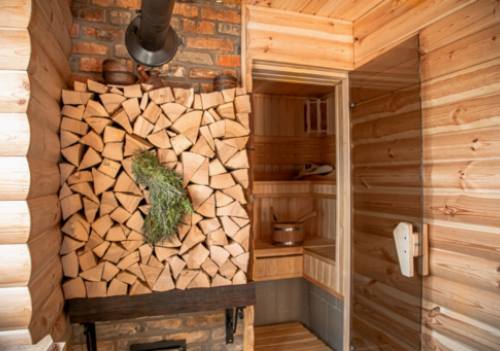Wood fuel has been a popular choice for heating saunas for centuries, providing a natural and traditional way to create a comfortable and relaxing environment. In this article, we will explore the cost-effectiveness of using wood fuel in saunas, offering tips on how to maximize efficiency, calculate the return on investment, and evaluate the environmental impact of this renewable energy source. Whether you are a sauna enthusiast or considering installing a wood-burning sauna in your home or garden, understanding the benefits and considerations of using wood fuel can help you make informed decisions for a sustainable and enjoyable sauna experience.

Maximizing Efficiency: Tips for Using Wood Fuel in Saunas
Wood fuel has been a popular choice for heating saunas for many years due to its affordability and availability. However, in order to maximize efficiency and get the most out of your wood-burning sauna, there are a few tips to keep in mind.
First and foremost, it is important to use dry, seasoned wood for your sauna stove. Wet or green wood will not burn as efficiently and can create excessive smoke and creosote buildup in the chimney. By using dry wood, you can ensure a cleaner burn and more consistent heat output.
Additionally, proper air circulation is key to maximizing efficiency in a wood-burning sauna. Make sure to leave enough space between the logs in the stove to allow for adequate air flow. This will help the fire burn more evenly and prevent smoldering, which can waste fuel.
Another tip for maximizing efficiency is to properly insulate your sauna. Good insulation will help retain heat and prevent it from escaping, allowing you to heat the sauna more quickly and maintain a comfortable temperature for longer periods of time. Make sure to regularly check and replace any damaged insulation to ensure optimal efficiency.
Lastly, consider using a heat-retaining stove or adding heat-retaining rocks to your sauna stove. These features can help maintain a consistent temperature in the sauna, reducing the amount of wood needed to keep it heated.
By following these tips and using wood fuel efficiently, you can maximize the cost-effectiveness of your wood-burning sauna while also enjoying a more comfortable sauna experience.
Calculating the Return on Investment of Wood-Burning Saunas
While the initial cost of installing a wood-burning sauna may be higher than other heating options, there are several factors to consider when calculating the long-term savings and benefits.
One key factor to consider is the cost of wood fuel compared to other heating sources. Wood is generally a more affordable option compared to electricity or gas, especially in areas where wood is readily available. By using wood fuel in your sauna, you can potentially save on heating costs over time.
Another factor to consider when calculating the return on investment of wood-burning saunas is the lifespan of the sauna itself. Wood-burning saunas are known for their durability and longevity, often lasting for many years with proper maintenance. This can translate to long-term savings compared to saunas that require more frequent repairs or replacements.
Additionally, wood-burning saunas are often more efficient at heating than other options, such as electric saunas. This increased efficiency can result in lower energy costs over time, further adding to the return on investment.
In conclusion, when considering the return on investment of wood-burning saunas, it is important to take into account the cost of wood fuel, the lifespan of the sauna, and the efficiency of heating. By carefully calculating these factors, it becomes clear that wood-burning saunas can be a cost-effective and sustainable option for heating your home and garden.
Evaluating the Environmental Impact of Wood Fuel in Saunas
However, the environmental impact of using wood fuel in saunas should not be overlooked.
One of the main concerns with wood fuel is the emission of harmful pollutants such as carbon monoxide, nitrogen oxides, and particulate matter. These pollutants can have detrimental effects on air quality and human health, especially in indoor spaces like saunas where ventilation may be limited.
In addition, the use of wood fuel contributes to deforestation and the depletion of natural resources. Harvesting wood for fuel can lead to deforestation, which disrupts ecosystems, reduces biodiversity, and contributes to climate change.
To mitigate the environmental impact of wood fuel in saunas, it is important to consider using sustainably sourced wood or alternative heating sources like electric or infrared heaters. Additionally, proper maintenance of the sauna stove and chimney can help minimize emissions and maximize fuel efficiency.
Overall, while wood fuel may be cost-effective and efficient for heating saunas, it is crucial to consider the environmental impact and explore more sustainable alternatives to minimize negative effects on the environment.
